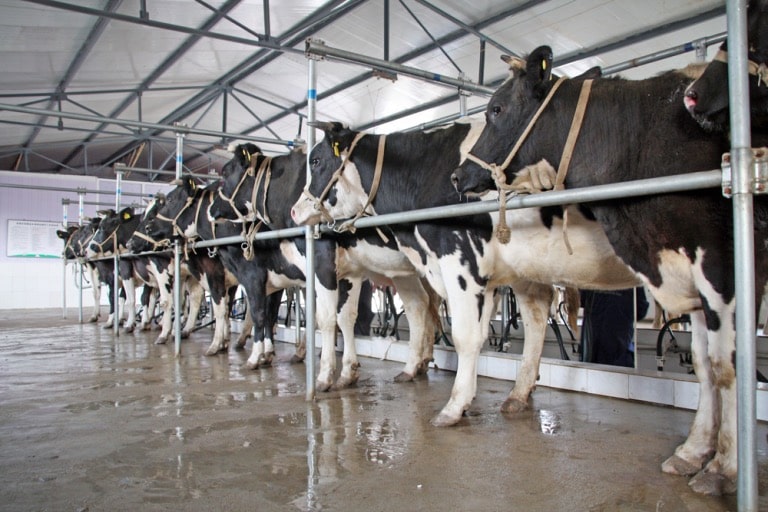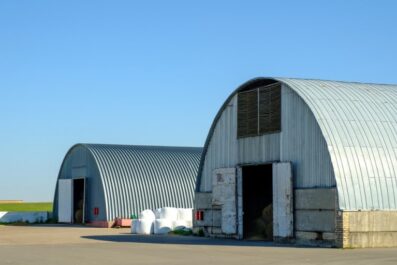Revolutionizing Animal Housing: Advances in Livestock Containment Solutions

Introduction to Modern Livestock Containment
The landscape of animal housing has evolved drastically in recent years. Technological advancements have led the charge, and livestock containment systems have become more sophisticated, ensuring better animal safety and well-being. New approaches offer innovative solutions like cow headlocks, designed to enhance livestock management by providing secure and efficient ways to manage herds, allowing for much easier handling practices.
Animal containment is not just about keeping livestock confined but also plays a crucial role in boosting productivity and ensuring animal comfort. These advancements have enabled farmers to run their operations smoothly while keeping animal welfare at the forefront. This dual focus on efficiency and welfare reflects a broader agricultural trend where sustainability and technological integration are increasingly prioritized.
Historical Perspective: How Far We’ve Come
The journey of livestock containment systems is a testament to human ingenuity. Historically, farmers relied on rudimentary techniques to manage their herds, often with minimal focus on animal comfort. The evolution has been significant and profound, from simple wooden fences to modern steel systems. Before the advent of advanced systems, herders used manual methods, which were labor-intensive and often stressful for the animals.
Key milestones include:
- The introduction of movable gates and adjustable headlocks.
- Marking a departure from conventional methods.
- Paving the way for better management practices.
These innovations have increased the efficiency of herd management and contributed to improved animal welfare. Each advancement tells a story of adaptation and improvement, highlighting a continuous quest for better solutions in agriculture.
Innovations in Livestock Restraints
Recent breakthroughs in livestock containment have revolutionized animal management. A notable advancement is the self-locking headlock mechanism, which improves safety and reduces the chances of harm to animals and handlers. These systems offer precision and control, significantly reducing the likelihood of mishaps.
Moreover, the development of automated feeding systems and climate-controlled barns signifies a step forward in ensuring optimal living conditions for livestock. By focusing on animal well-being, these innovations improve productivity and contribute to sustainable farming practices. Integrating data analytics with these systems enables real-time monitoring and adjustments, thus promoting a healthier environment for the animals.
Benefits of Modern Containment Systems
Modern livestock containment systems offer a range of benefits that enhance farm operations. Firstly, they increase safety by minimizing the risk of escape or injury during handling. It creates a more peaceful environment for animals and farm workers, allowing for more efficient operations. The advanced design and materials also mean these systems are built to last, reducing long-term costs.
These systems contribute significantly to animal welfare, providing comfort and reducing stress levels, which positively impact productivity. Additionally, environmentally friendly designs help minimize waste and optimize resources, promoting sustainability on the farm.
Challenges Facing the Industry
Despite the numerous benefits, the industry needs help adopting modern containment systems. High initial costs can be a barrier for small-scale farmers, preventing them from upgrading their facilities. This economic concern is compounded by the need for long-term financial foresight, which not all farmers can afford.
Moreover, the need for ongoing training and education to effectively implement these technologies poses many hurdles. Integrating technology in traditional farming systems requires a cultural shift that some might resist. However, as technology becomes more accessible and cost-effective, this barrier will likely diminish. More excellent industry support through training programs and subsidies can help overcome these challenges.
The Future of Livestock Housing
The future of livestock housing looks promising, with continued technological advancements set to redefine traditional practices. Automation will be at the forefront, with systems that monitor animal health and behavior in real time, ensuring prompt interventions when necessary. Wearable tech for livestock that tracks movement and vital signs will become commonplace.
The trend towards eco-friendly designs is expected to grow, with innovations focusing on renewable energy sources and waste reduction, further supporting the move towards sustainable agriculture. These advancements are predicted to make farming more efficient and profitable, benefiting farmers and their livestock. The future is an integrated system where technology and traditional techniques harmonize for optimum results.
Best Practices for Farmers
Certain best practices can help farmers adopt modern containment systems and maximize their benefits. It is crucial to select systems tailored to the specific needs of your farm and livestock. When selecting equipment and technology, consider the species, herd size, and environmental conditions.
Routine upkeep and surveillance are crucial to guarantee the durability and efficiency of these systems. Establish a routine for inspections and prompt repairs to avoid breakdowns. Farmers must prioritize investing in training so that they and their employees remain informed about the newest technologies and techniques. This helps them understand how to integrate these systems efficiently into daily operations for optimal results.
Conclusion: Embracing Change for Better Animal Management
In conclusion, the livestock containment field is transforming like never before. Through the adoption of new technologies and practices, farmers can improve the effectiveness and financial success of their businesses while also ensuring the well-being of their animals. As the industry continues to innovate, those who adapt will find themselves at the forefront of sustainable and productive farming.





